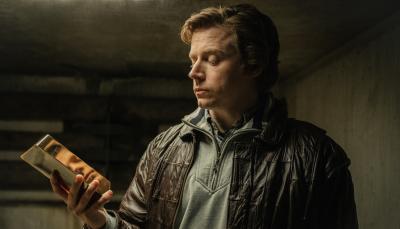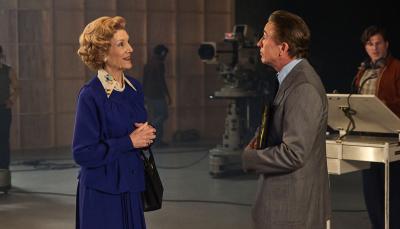The Secret Garden: How Does the New Film Stand Up to Previous Versions?
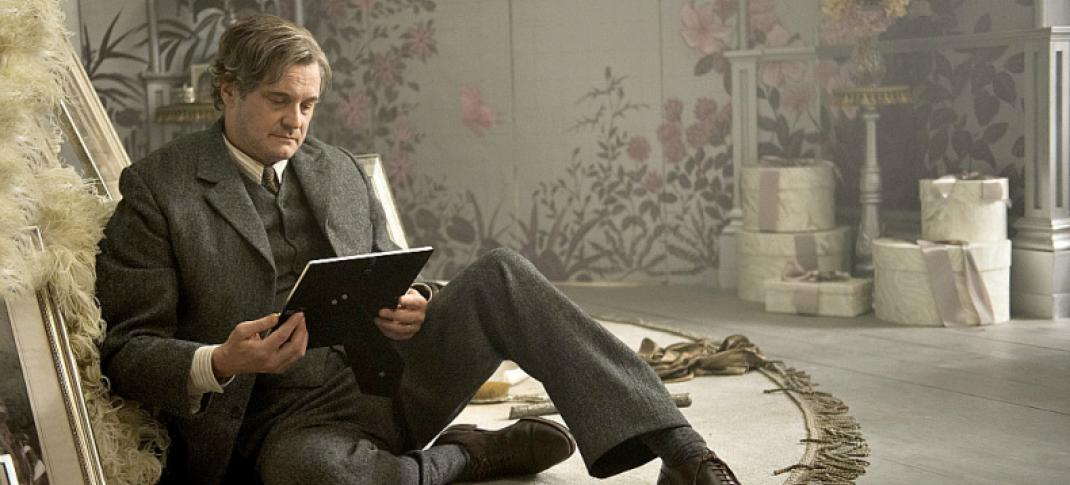
Ever since its publication in 1911, The Secret Garden by Frances Hodgson Burnett (1849-1924) has never been out of print. The popular novel has inspired multiple feature film and television adaptations, including the most recent 2020 version, a lavish retelling with an all-star cast that includes Colin Firth, Julie Walters, Amir Wilson, and Dixie Egerickx.
Here's the trailer:
Frances Hodgson Burnett was born in England, but her family emigrated to the U.S. after her father died. Mostly self-educated, she produced over 50 books for adults and children, some of which are available on Project Gutenberg. She checked all the usual boxes for the female nineteenth-century fiction writer: she was a “New Woman,” she was too commercial, and shockingly, she married three times, two of which ended in divorce.
The Secret Garden was first serialized in a magazine targeting adults, but the initial sales for the book were lukewarm, and it was largely overshadowed by her greatest hits Little Lord Fauntleroy and A Little Princess (which were also later both adapted for stage and screen).
For more about her, see this article by Gretchen Gerzina, author of Frances Hodgson Burnett: The Unexpected Life of the Author of The Secret Garden, written for the Shakespeare Theatre’s 2016 musical production. The dramatization of The Secret Garden for various additional platforms such as the stage or screen is nothing new, and even an operatic version was debuted by the San Francisco Opera in 2013.
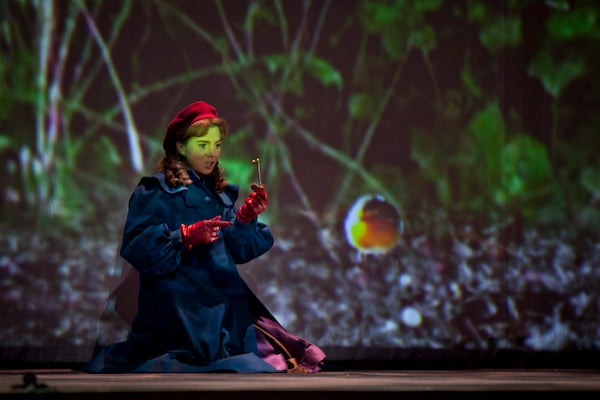
So what's the book about? Mary Lennox, neglected by her parents and raised by servants in India, loses her family to a cholera epidemic. She is sent to live with her uncle Archibald Craven at Misselthwaite Manor in Yorkshire, an ancient and creepy house. Her uncle is reclusive and unused to children and Mary, left to her own devices, finds a locked, walled garden on the grounds and a way to get into it. She also discovers the Craven household’s secret—her invalid cousin Colin. She makes an unlikely friend, country boy Dickon, and his many animal friends, and both Mary and Colin heal emotionally and physically as they bring the garden to life.
Sappy? Definitely. However, for modern-day readers, the book can feel problematic for other reasons. Mary is an unlikeable child and a product of the British Empire which gives her a massive case of white privilege. Here’s an excerpt from the scene where she first encounters Martha, Dickon’s sister, a maid in the house, who expresses disappointment that Mary is not dark-skinned:
“What!” she said. “What! You thought I was a native. You—you daughter of a pig!”
Martha stared and looked hot.
“Who are you callin’ names?” she said. “You needn’t be so vexed. That’s not th’ way for a young lady to talk. I’ve nothin’ against th’ blacks. When you read about ’em in tracts they’re always very religious. You always read as a black’s a man an’ a brother. I’ve never seen a black an’ I was fair pleased to think I was goin’ to see one close. When I come in to light your fire this mornin’ I crep’ up to your bed an’ pulled th’ cover back careful to look at you. An’ there you was,” disappointedly, “no more black than me—for all you’re so yeller.”
Mary did not even try to control her rage and humiliation.
“You thought I was a native! You dared! You don’t know anything about natives! They are not people—they’re servants who must salaam to you. You know nothing about India. You know nothing about anything!”
Note that Martha uses the phrase “a man and a brother,” the slogan of the British and American abolitionist movement. Burnett's contemporary audience would probably consider it normal for a white child brought up in India to have this attitude, but possibly not to be so rude, even to a servant. And, Burnett takes some risks all of her own—she makes Mary unlikable in just about every way, unfriendly, bad-tempered, and uncommunicative, not your typical plucky heroine bravely facing adversity. She also has Mary befriend a working-class boy; what will happen to that friendship? (Wisely, this is something Burnett does not address, although the Hallmark film version of 1987 found a solution.)
So Mary is, at best, what we Brits like to call “a little madam.” Colin is pretty much the same. They are both damaged, isolated children. Dickon comes from a poor family but Burnett is always banging on about how healthy and happy he is. And that’s another problem. Burnett, who suffered from depression, discovered Christian Science and was cured. While she had the courage to introduce characters with disabilities—at the beginning of the book Colin can’t walk, and his father suffers from scoliosis—she later explains the “cure” in diluted Christian Science terms. But at the same time, it’s lovely—and far more credible— to see Mary come into her own, gaining strength and awareness, and learning to run and to use a jump rope.
Now you can ignore this attempt to bring the author’s beliefs into the book, just as many of us happily ignored the Christian themes in C. S. Lewis’s Narnia books (and the racism, and the sexism, and … ) but it becomes difficult to do so if you re-read as an adult. And it’s particularly difficult to explain if you are introducing a child to these books. So be warned.
The strength of the book is the compelling story, the descriptions of Misselthwaite Manor and the gardens, and the development of Colin and Mary into likable young people. There are passages which you will never forget, and this, at the beginning of the book, still gives me the shivers.
Once she crept into the dining-room and found it empty, though a partly finished meal was on the table and chairs and plates looked as if they had been hastily pushed back when the diners rose suddenly for some reason. …
But no one came, and as she lay waiting the house seemed to grow more and more silent. She heard something rustling on the matting and when she looked down she saw a little snake gliding along and watching her with eyes like jewels. She was not frightened, because he was a harmless little thing who would not hurt her and he seemed in a hurry to get out of the room. He slipped under the door as she watched him.
“How queer and quiet it is,” she said. “It sounds as if there were no one in the bungalow but me and the snake.”
Simply put, you can’t do that in a film for so many reasons, which is why some versions replace the cholera outbreak with an earthquake.
So, onto the TV and film version. The first feature film, now lost, was made in 1919 by Famous Players-Lasky Corporation. A lobby card, sold as souvenirs to the audience and popular for some years, is all that remains.

Lobby card for the 1919 film “The Secret Garden.” Public Domain, Wikimedia Commons.
In 1949, the book got the full Hollywood treatment featuring famous child actors Margaret O’Brien (Mary), Dean Stockwell (Colin), and Brian Roper (Dickon). Though Roper was born in Yorkshire, but his accent is … not good. Here’s the scene in which Colin meets Dickon and his animals:
Sadly I could not find a clip illustrating the film’s technical effects: as the garden bursts into life, the film changes in a Wizard of Oz-like moment from black-and-white to color.
Despite his terrible accent, Roper reprised his role in the first BBC television series, made in 1952 by Dorothea Brooking, a fearless pioneer of quality children’s programs and famous for her adaptations of classics by writers like E. Nesbit and Noel Streatfield. The cast included Billie Whitelaw (Hot Fuzz) as Martha and Elizabeth Saunders as Mary. All eight episodes of the 1952 series have been lost, as has her 1960 series with Prunella Scales (Fawlty Towers) as Martha.
In 1975 Brooking again serialized The Secret Garden, this time with seven 30-minute episodes. In 1984, the BBC dramatically combined and cut the seven episodes into a 110-minute film. Both the series and the film survive, and Brooking, always willing to experiment with casting, was an early proponent of colorblind casting with child actor Andrew Harrison as Dickon.
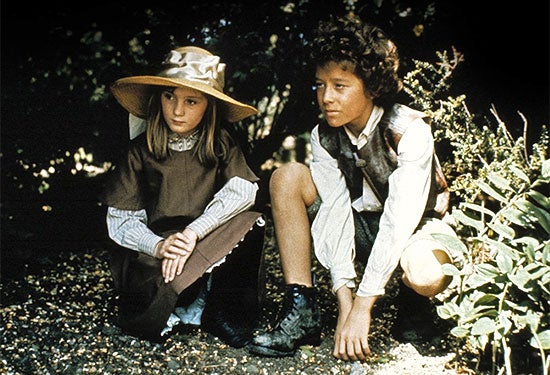
In 1987 a Hallmark version, filmed at Highclere Castle (better known to many as the house in Downton Abbey) was made, where Mary, all grown-up, returns to the house at the end of World War II and remembers her childhood there. Dickon has conveniently been killed off in the war, leaving the field wide open for Colin (Colin Firth) to propose marriage to Mary. The cast also includes some well-respected actors—Michael Hordern as gardener Ben Weatherstaff, Derek Jacobi (Last Tango in Halifax) as Archibald Craven, Stephen Dillane (The Tunnel) as Captain Lennox, Mary’s father, and Billie Whitelaw returns as the housekeeper Mrs. Medlock. A sequel, Back to the Secret Garden (2001) was dismissed by a critic as “a considerable waste of time.”
Thankfully we hit gold with a 1993 film adaptation that has mostly stood the test of time, directed by Agnieszka Holland. Maggie Smith (Downton Abbey) steals the show as Mrs. Medlock. Kate Maberly (Mary Lennox), John Lynch (Archibald Craven), Andrew Knott (Dickon), and Heydon Prowse (Colin) jumpstarted their careers in this film. In this scene, Mary asks her uncle for a little bit of earth to plant seeds:
On to 2017, when a steampunk version of The Secret Garden was released. Self-assured teenager Mary (Glennellen Anderson, Stranger Things) arrives at Misslethwaite Factory at the heart of Craven Industries, following the death of her parents in India:
And that brings us to the 2020 version, which applies its own particular spin to the original story. The setting has been changed to post-war Britain in 1947 when, after almost two centuries, British rule ended with the partition of India. The film is CGI-rich, and some critics thought it was more Jurassic Park than the classic English gardens which were used as locations.
Which versions have you watched it? What did you think? And I’d love to hear if anyone has read the book aloud to their children, as I did.


